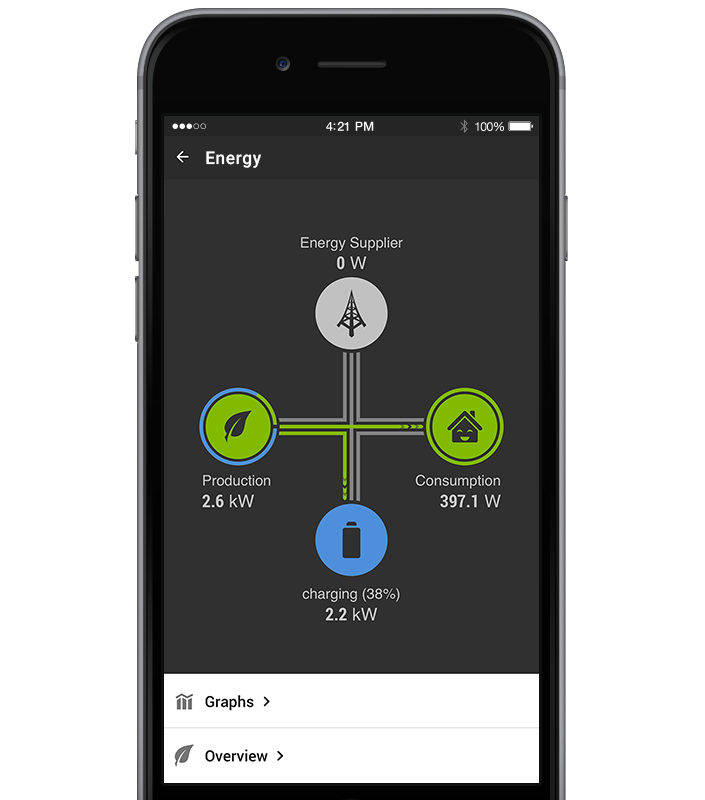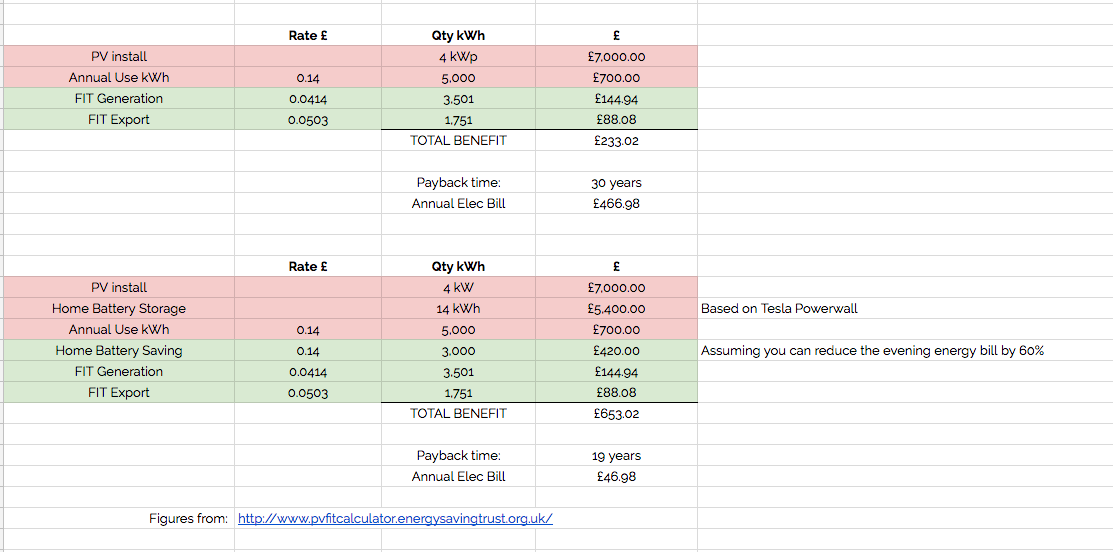
Omid’s Law: A Look At Home Battery Storage
Most people think of shiny electric cars when they hear ‘Tesla’, but those who have or are thinking of having solar PV installed may also think of the Powerwall – a home battery that stores surplus energy produced by your solar panels ready for use later in the evening. Unlike solar panels, which have been around for many years, the concept of storing your PV generation in a large battery is new for many.
Solar panels – still worth it?
Solar panels are a mixed bag. Some people install solar PV primarily for its eco credentials, others are drawn by the payback terms on their investment. There have been government schemes and subsidies to promote uptake, however, these have been short-lived: the amount Feed in Tariffs (FIT) pay is now a pitiful 4.14 pence per kWh for anything generated. This is less than a 3rd of what it was in 2016.
Upon first glance, the value proposition of solar PV doesn’t seem attractive.
Many see it as something bulky and unsightly on top of your roof, that requires extra planning consideration and maintenance, for very little benefit.
So why bother?
Well, don’t rule PV out completely just yet, and that’s thanks to new options for optimising the way we store and use the energy that our ugly ducking panels produce. Why not store the electricity you generate into some form of home battery storage?
It’s obvious that you’ll be generating more electricity from your solar PV during the daylight hours. The FIT tariffs pay on this generation figure, in addition to exported electricity. The supplier pays for 50% of your generation as ‘export’, assuming that you use half of what you generate, and they get the other half. The trouble is, there’s usually no meter in place to identify exactly what you use and what you export, only what you generate.
It is likely that you will be exporting more than 50% of your daytime generation to the grid, due to the simple fact that most of us aren’t at home during the day to use the energy we produce – we’re out at work. So the chances that we’ll be running multiple energy-hungry appliances like washing machines in the middle of the day is quite slim.
Once the working day is over and the sun begins to sink behind the clouds, our homes tend to come to life – the lights and heating come on, as does the oven, the TV and several other smaller devices like tablets as the whole family are home and getting on with 21st-century life.
This is clearly the average period of peak consumption, at which point your PV is not doing anything for you, and you are paying (about) 14p per kWh to your supplier. Seems silly.
What is the solution?
Well, one option is to store all of that generated energy during the daylight hours, for use when you are actually home.
Anything you use in the evening will then be drawn from the stored power in your home battery prior to importing from the grid, meaning it’s likely you will be using way more than 50% of your generation. Your FIT would still be paying out based on the assumed export quota of 50%, even though you may be exporting less, whilst also importing less.
The homeowner is now not only presented with both the payback terms offered by the standard PV install and FIT tariffs, but also the additional monetary savings in reduced consumption.
This additional saving will equate to a proportionally higher gain than the FIT alone, and as such offers a much more attractive investment into this renewable solution as a whole.

Example calculation
So is it worth it, or should I just put that part of my budget into an ISA? Well, the formula is simple enough:
Total cost/annual benefits = no. of years to payback.
The calculation below is indicative of the potential savings to be had with home battery storage. Now, bear in mind that these must be taken with a pinch of salt as they don’t take into account seasonal fluctuations, solar tracking, size of the installation and so on. Alright, disclaimers over, let’s take a look:

So the figures do indicate that your total payback term can be reduced by about 30% with a home battery. In addition to this, the total annual bill can be significantly reduced, making the whole proposition very compelling.
What lies ahead?
Looking ahead at things to come, and future trends in this area, we are eagerly awaiting further advancements and economies of scale to bring down the price of home batteries, whilst increasing capacities with new storage technologies.
Keep your eyes on Solid State Lithium Ion for homes, and perhaps even domestically viable hydrogen fuel cells for more efficient storage at increased capacity.
Things get even more interesting when exploring the benefits of DC lighting. Currently, most batteries store at DC, transforming to an AC output in order to power current home infrastructure. However, the vast majority of devices within your home run on DC… this means each TV, LED light or laptop would use its own transformer to step back down to DC, introducing losses and inefficiencies at each conversion.
I look forward to the uptake of both AC and DC output within home batteries, providing a more optimised solution for the home of the future.
Conclusion
The fully integrated home has the potential for further benefits – what if the home battery could also act as your UPS? Operating independently from grid supply would render the inconvenience of power cuts a thing of the past, as your home continues to operate just off your battery in any outage. The average home will then be approaching concepts reserved for off-grid homes, just without all the tree hugging.
Why not rid yourself all those external power bricks for all your mobile devices, your routers, your TVs, and power them directly off a DC ring main?
Ok, dropping AC completely is admittedly some way off, but as we become increasingly power-hungry in our lives, all of these advancements and efficiencies will contribute to the sustainability of our connected lifestyles.
Closing thoughts on this: don’t switch off to save energy, use what you have in a smarter way. Work smarter, not harder and all that.
